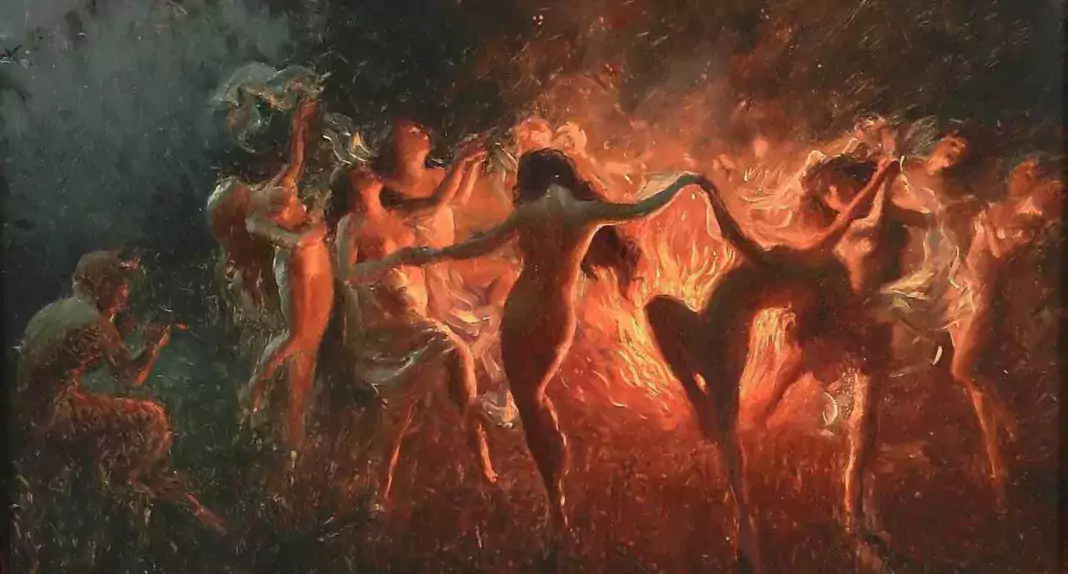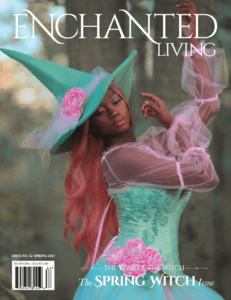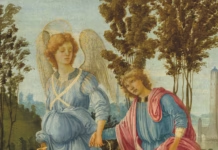Feature Image:
Nymphs Dancing to Pan’s Flute (1920), by Joseph Tomanek
Have you heard of the springtime festival called Walpurgisnacht? If you hail from northern or central Europe, you are most likely familiar with this nighttime party with witchy roots. If you live in the United States, like me, you probably haven’t, unless you’re a pagan or witch who revels in such celebrations or someone who has noticed references to Walpurgisnacht in famous pieces of music, art, theater, and literature: Luis Ricardo Falero’s painting Walpurgisnacht, Felix Mendelssohn’s cantata Die erste Walpurgisnacht, Goethe’s Faust, Edward Albee’s Who’s Afraid of Virginia Woolf, and Bram Stoker’s short story “Dracula’s Guest” all depict the mystery and the macabre of this enchanting, eerie night.
As a pagan witch, I observe the eight holidays of the neo-pagan Wheel of the Year, called sabbats. The sabbats are based on seasonal ancient pagan celebrations that correspond with solstices (winter and summer), equinoxes (fall and spring), and cross-quarter days (days that fall equally between a solstice and an equinox). On April 30 of each year, the witch’s wheel makes yet another turn, and I like to kick off the eve of Beltane with the coinciding holiday, Walpurgis Night (also known in Germany as Hexennacht), as it tickles some of my ancestral pagan roots. And I’ll admit, it is a good excuse for a spooky party with Halloween-like elements. This modern-day European and Scandinavian festival is actually a blend of both Christian and ancient pagan Celtic and Germanic celebrations. It’s named after Walpurga, a young British nun and Christian saint who lived as a missionary in the Frankish Empire during the eighth century. Observance of her canonization day, May 1, eventually fused with Norse celebrations of spring and Beltane.
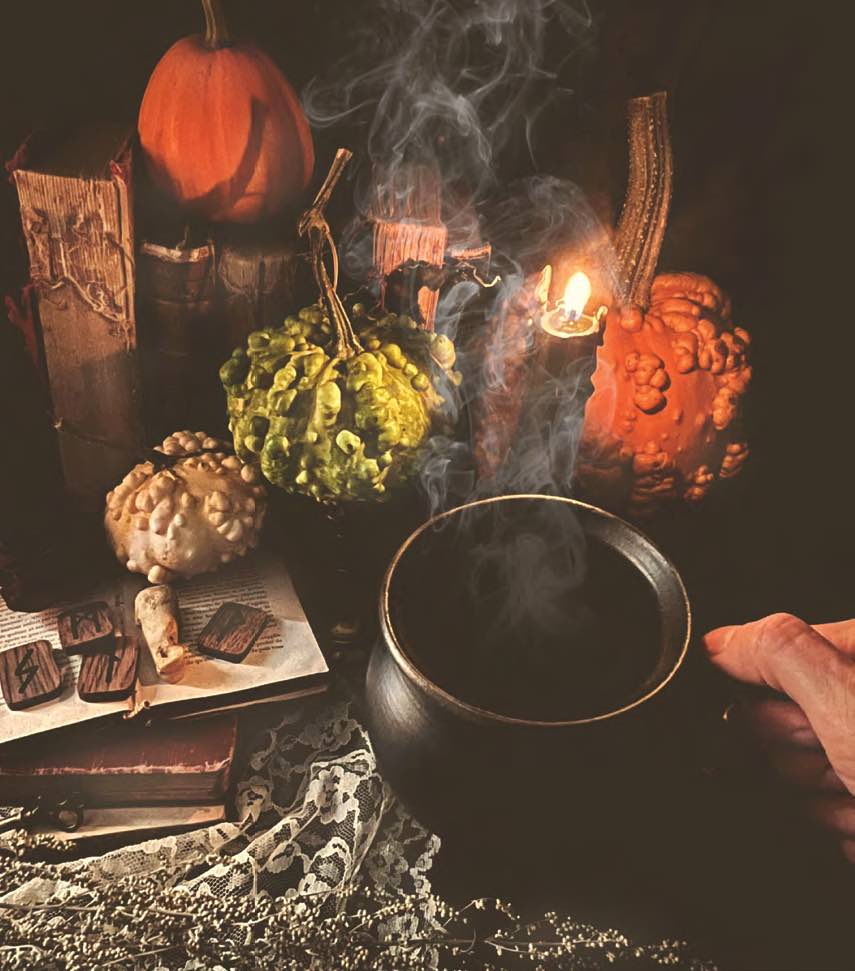
Beltane and Samhain (which coincides with Halloween) are six months apart and directly opposite each other on the Wheel of the Year. (When it’s Beltane in the Northern Hemisphere, it’s Samhain in the Southern Hemisphere). Pagans often refer to Walpurgisnacht as the second Halloween. It is customary to dress up as a witch, devil, or other supernatural being and go trick-or-treating in the village of your town. Like Samhain, it is thought of as an in-between astrological event where the veil between the earthly realm and spirit world is said to thin, making it an opportune time to communicate with spirits and the fae. Bonfires are lit to keep malevolent spirits at bay, and there are parties with food and drink and ceremonies where you can release negative energies and experiences from the year by writing them down on paper and tossing them into the bonfire. Traditionally, it is customary to drink alcohol and make noise to both ward off negative energies and welcome the souls of departed loved ones. It is also customary to make offerings of the deceased’s favorite foods.
There are regional variations of this holiday. For instance, many Germanic people celebrate an old belief that thirty witches across Europe mounted their broomsticks at night and flew to Brocken (the highest part of the Harz Mountains in north-central Germany) to gather and welcome the return of spring. Organized community festivities abound in the Harz Mountain region on Walpurgisnacht, including bonfires, partygoers in witchy costumes, springtime rituals, customary food and drink, fireworks, and entertainment
in the form of jugglers, magicians, bands, comedians, and dance.
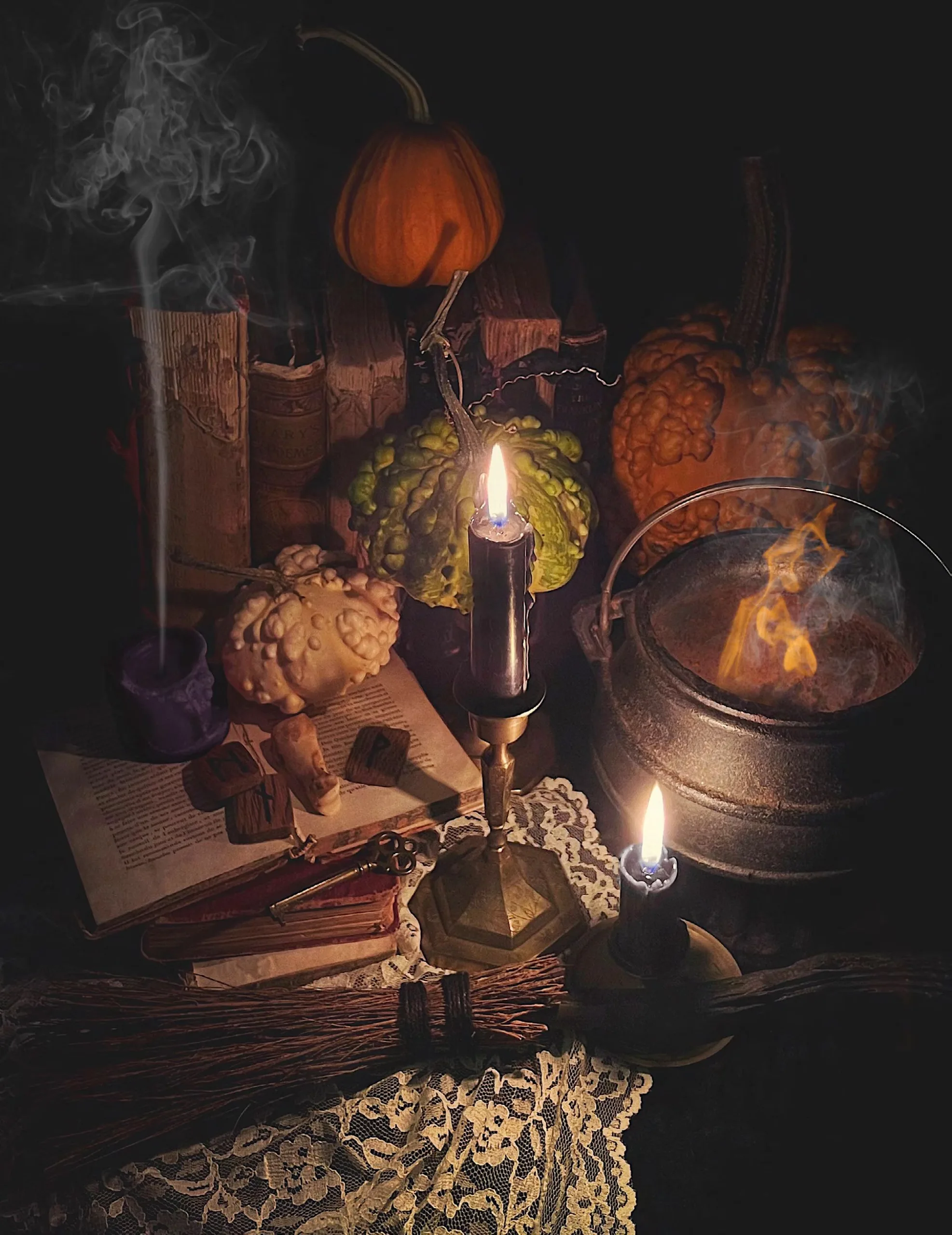
Since many of us probably won’t make it to the Harz Mountain region to join in the fun, we can make some of our own dark merriment on this evening. Here are some ideas for celebrating at home:
• Decorate with spring flowers and fresh greens. If you’re lucky like me, you may still have pumpkins and gourds left over from Samhain. I save mine, storing them in a cool, dark place and then retrieve them for Walpurgis Night decor.
• Connect with the element of fire, symbolic of the sun and the presence of more light. Light some candles. Make a bonfire outdoors, or if that’s not feasible, make a miniature one in your cast-iron cauldron.
• Write down negative memories, thoughts, and feelings from the year that you would like to release and toss these slips of paper into your bonfire.
• Just like at Samhain-time, the veil is said to be thin on this evening. As a spirit medium, I don’t necessarily believe it’s actually thinner, but with all the collective energy around spirit communication on this night, it can make it easier to connect. That being said, Walpurgis Night is an opportune time for spirit communication and divination practice with such tools as tarot, runes, pendulum, and automatic writing.
• Watch a spooky flick. If you’re an isolated witch like me, consider having a virtual watch party with witchy kin.
• Play some atmospheric music. Do a search for “Walpurgis Night” on Spotify, and you’ll find a treasure trove of celebratory tunes.
• Read some old ghost stories by candlelight and nibble on some chocolate treats.
• Brew yourself a cup of mugwort tea (avoid if pregnant). Mugwort is known as the witch’s flying herb and can produce some interesting vivid dreams: visualize yourself flying to Brocken. To make, use a tablespoon of dried herb per cup of boiling water. Steep 15 minutes, strain out plant matter, add honey to sweeten, and enjoy. Mugwort is somewhat bitter and a mild sedative, so avoid driving or operating machinery after consuming it.
This nighttime magical celebration continues until the next day, May 1, which is Beltane. Beltane marks the beginning of fertile spring, and the beginning of the days of light returning in full glory.




























